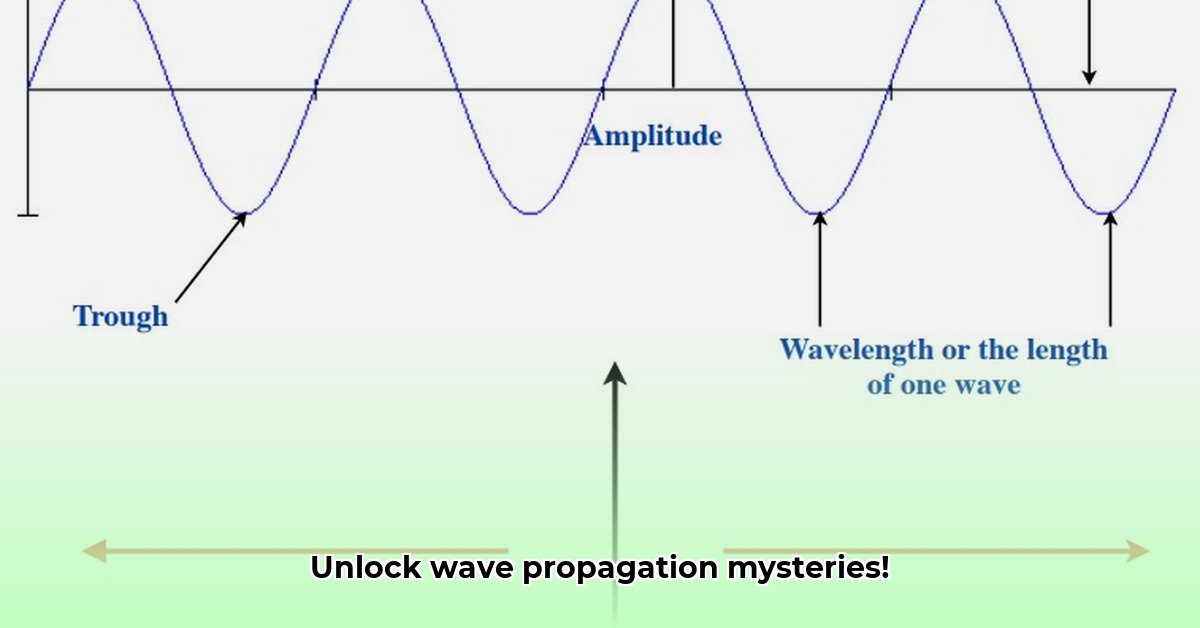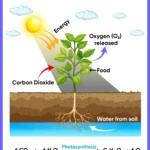The Dance of Waves and Matter: Understanding Wave Propagation
Wave propagation, the transmission of energy through a medium or space, is a cornerstone of physics. From the subtle ripples in a still pond to the powerful roar of thunder, waves permeate our world. But what exactly constitutes a “medium” in this context, and how does it orchestrate the behavior of these energetic disturbances? This article plunges into the captivating realm of wave-medium interactions, exploring the diverse ways media influence wave propagation, encompassing familiar examples like sound and light, as well as venturing into the intricate world of quantum fields. For a more visual understanding of wave behavior in a liquid medium, check out this water wave simulation.
Waves, whether mechanical (requiring a medium, like sound) or electromagnetic (capable of traversing a vacuum, like light), possess distinct characteristics such as frequency, wavelength, amplitude, and velocity. These properties are intrinsically linked to the nature of the medium through which the wave travels. The medium’s properties, including density, elasticity, and temperature, play a pivotal role in dictating the speed of wave propagation. Denser materials generally impede wave speed, while more elastic materials facilitate faster transmission. For instance, sound travels considerably faster through steel than air due to steel’s higher density and elasticity. This difference underscores the crucial role of the medium in shaping wave behavior. Furthermore, when a wave encounters a boundary between two different media, reflection and transmission phenomena arise, governed by the properties of the interacting media. Reflection involves the bouncing back of a wave, while transmission allows the wave to continue its journey into the new medium, albeit potentially with altered characteristics.
Decoding Light’s Interactions: The Complex Refractive Index
The complex refractive index (n = nR + inI) is an indispensable tool for deciphering the behavior of light within various materials. This complex quantity encapsulates two crucial aspects of light-matter interaction: the real part (nR) describes how the material modifies light speed, while the imaginary part (nI) quantifies the extent of light absorption by the material. Accurately predicting reflection, transmission, and absorption at material interfaces necessitates the utilization of the Fresnel equations. These equations, incorporating the complex refractive index, ensure the principle of energy conservation is upheld. The practical implications of understanding the complex refractive index are far-reaching, impacting the design of optical devices and predicting the intricate dance of light within diverse materials. This knowledge is pivotal in fields like optical engineering and materials science, enabling the creation of advanced optical components and the manipulation of light for various technological applications.
A Wave’s Odyssey: Reflection, Refraction, Diffraction, and Absorption
A wave’s journey is rarely straightforward. It encounters a series of phenomena that mold its trajectory and intensity. Reflection, the bouncing back of a wave from a surface, is responsible for echoes and the shimmering reflections in a mirror. Refraction, the bending of a wave as it transitions between media with different refractive indices, accounts for the apparent displacement of objects submerged in water. Diffraction, the spreading of waves as they navigate around obstacles or through apertures, explains why we can hear sounds even when not directly in line with the source. Finally, absorption is the process through which a wave’s energy is transferred to the medium, such as sunlight warming the Earth’s surface. Comprehending these phenomena is essential for predicting and manipulating wave behavior in diverse applications, spanning medical imaging, telecommunications, and beyond. The changing speed of light as it passes from air to water, resulting in refraction, exemplifies the profound impact of media on wave propagation.
Waves in Motion: Propagation through Dynamic Media
Wave propagation takes on an added layer of complexity when the medium itself is in motion. Consider sound waves traversing moving air: the air’s movement modifies both the speed and direction of the sound wave, a phenomenon known as the Fresnel-Fizeau drag effect. This interaction highlights the dynamic interplay between waves and their surrounding media. Visualize sound waves propagating through a windy environment; the wind, acting as a moving medium, significantly influences the sound’s path and speed. This interplay between waves and dynamic media presents exciting avenues for exploration and innovation, particularly in areas like modulation systems, which cleverly manipulate medium properties without physically displacing the matter itself.
From Theory to Technology: Applications and Future Directions
The study of wave propagation extends far beyond theoretical musings; it forms the bedrock of numerous technologies shaping our modern world. Communication systems, ranging from radio waves to satellite signals, rely on intricate wave propagation principles. Medical imaging techniques, such as ultrasound and MRI, leverage wave phenomena to visualize internal bodily structures. Even our understanding of geological structures and the ability to predict earthquakes hinges on analyzing seismic waves. Future research endeavors are focused on conquering challenges like environmental interference and signal distortion, propelling advancements in 5G technology, delving into the intriguing realm of quantum communication, and harnessing the power of artificial intelligence for enhanced signal processing. The potential applications are vast, promising faster, more reliable communication networks, more precise and less invasive medical diagnostics, and a deeper understanding of the world around us. Seismic wave analysis, for instance, provides invaluable insights into the Earth’s internal structure and enables earthquake prediction, demonstrating the profound impact of wave propagation research on our lives. Ongoing research into metamaterials, artificial structures engineered to exhibit electromagnetic properties not found in nature, offers revolutionary possibilities for manipulating light and other electromagnetic waves, paving the way for novel technologies like cloaking devices and perfect lenses.
- Discover Long Black Pepper: Flavor & Health Benefits - April 25, 2025
- Shocking Twists: The Grownup Review: Unreliable Narration - April 25, 2025
- A Quiet Place Book vs Movie: A Deep Dive - April 25, 2025
















